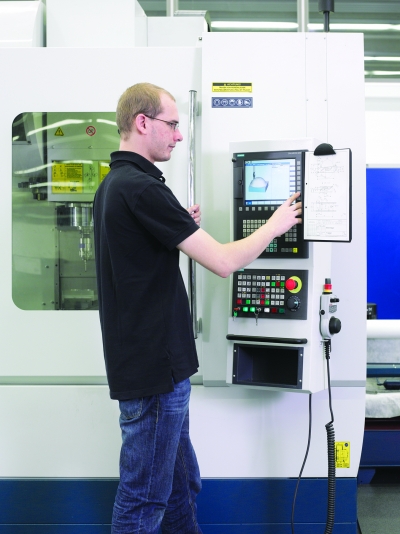
CNC Software Inc., producers of Mastercam CAD/CAM software, announced a 4-axis milling post processor that will unleash the productivity on SINUMERIK-controlled machine tools. The new post processor was developed utilizing the technical expertise of Siemens CNC engineers.
This post processor includes support for SINUMERIK 840D sl and 828D CNCs from Siemens. It features:
- CYCLE 832 support for high-speed settings, now including the latest Top Surface functionality.
- Drill cycles (CYCLES 82, 83, 84, 85, 86, 840), with full 4-axis support.
- WORKPIECE output for graphical simulation, including rotary axis blank orientations.
- Tool call as tool name or tool number.
- TOFFR option.
- Siemens 4-axis application guide.
- Optimized multiaxis toolpath utilizing the FGROUP and FGREF commands.
- Streamlined program editing with the GROUPS functionality.
“The development of this new 4-axis post for Mastercam 2019 demonstrates our ongoing commitment and collaboration with Siemens, to bring the highest productivity gains to machine tools, that began more than two years ago with release of our 3-axis milling post processor for Mastercam 2017,” says Post Department Manager Pedro Sanchez, Jr. of CNC Software.
It is cooperation like this that provides Mastercam users the opportunity to truly complement their CAM investment and give their shops the best chance at a more efficient manufacturing solution, from design to part.
Virtual Technical Application Center Manager Chris Pollack, Siemens Industry Inc., comments, “With a strong continued collaboration, we’re able to optimize product performance for both the Mastercam software as well as the SINUMERIK control. This allows our mutual customers to achieve the very best out of their resources. Seeing what we’ve already been able to accomplish, Siemens looks forward to continuing to help Mastercam create more advanced post processors in the future.”
Contact Details
Related Glossary Terms
- computer numerical control ( CNC)
computer numerical control ( CNC)
Microprocessor-based controller dedicated to a machine tool that permits the creation or modification of parts. Programmed numerical control activates the machine’s servos and spindle drives and controls the various machining operations. See DNC, direct numerical control; NC, numerical control.
- computer-aided manufacturing ( CAM)
computer-aided manufacturing ( CAM)
Use of computers to control machining and manufacturing processes.
- gang cutting ( milling)
gang cutting ( milling)
Machining with several cutters mounted on a single arbor, generally for simultaneous cutting.
- milling
milling
Machining operation in which metal or other material is removed by applying power to a rotating cutter. In vertical milling, the cutting tool is mounted vertically on the spindle. In horizontal milling, the cutting tool is mounted horizontally, either directly on the spindle or on an arbor. Horizontal milling is further broken down into conventional milling, where the cutter rotates opposite the direction of feed, or “up” into the workpiece; and climb milling, where the cutter rotates in the direction of feed, or “down” into the workpiece. Milling operations include plane or surface milling, endmilling, facemilling, angle milling, form milling and profiling.
- toolpath( cutter path)
toolpath( cutter path)
2-D or 3-D path generated by program code or a CAM system and followed by tool when machining a part.








